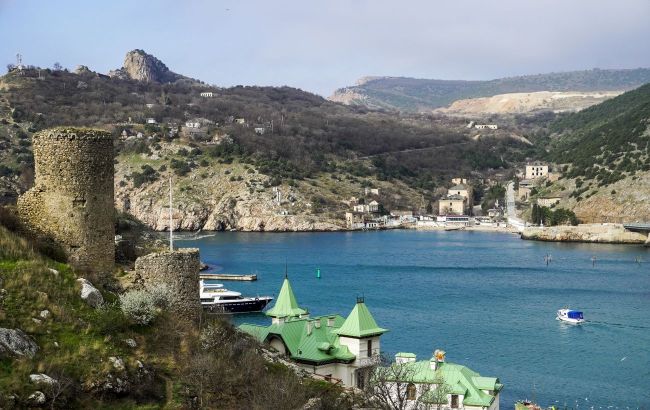Black Sea suffers as war and Crimea occupation trigger methane emissions
 Black Sea, Sevastopol (Illustrative photo: Getty Images)
Black Sea, Sevastopol (Illustrative photo: Getty Images)
In the Black Sea near the coasts of occupied Crimea and the Caucasus, more than 950 points of active methane emissions have been detected, signaling an impending environmental disaster, according to the National Resistance Center.
According to the latest data, over 600 active methane sources have been recorded in the coastal zone of Crimea, and another 350 near the Caucasus coast.
Some of the emissions have been registered at depths of up to 725 meters in the form of gas hydrates - crystalline structures that can uncontrollably break down under disturbed conditions, releasing large volumes of greenhouse gases.
Causes and consequences
The increase in the number of emission points is directly linked to Russia’s activities on the occupied peninsula.
The main factors cited include offshore drilling for oil and gas extraction, the construction of military facilities, and regular naval exercises involving explosives and heavy equipment.
According to sources from the National Resistance Center, emission concentrations are highest in the areas of Cape Fiolent, Sevastopol Bay, and the Kerch Strait, where the occupiers disguise drilling as geological exploration.
Scientists who recorded these processes were advised to refrain from making public comments after the data leak.
Uncontrolled methane emissions destabilize seabed layers, lead to the degradation of the sea floor, and increase the risk of a chain reaction.
Methane traps heat 25 times more effectively than carbon dioxide, which can reduce oxygen levels in the water and cause mass die-offs of marine organisms.
Risks for the Black Sea
If the situation remains uncontrolled, the deep-water zones of the Black Sea could become dead zones.
A methane surge triggered by explosions or tectonic shifts would affect not only Crimea but also the coastal areas of Türkiye, Romania, and Bulgaria.
Experts note that under the guise of resource development, the occupiers are effectively creating a zone of technological risk, where military interests are prioritized over environmental safety.
In the occupied territories of Ukraine, including Crimea, Russia has begun implementing a new digital monitoring tool: employees of educational and government institutions are required to install the Max messenger, created by Russia’s Ministry of Digital Development, to increase surveillance of the population.
Additionally, in Sevastopol, the Russians completely looted the large Ukrainian Navy landing ship Kostyantin Olshansky, seized in 2014, leaving only an empty hull.

